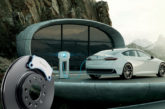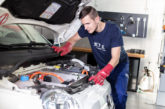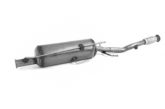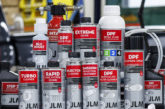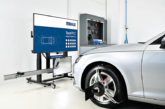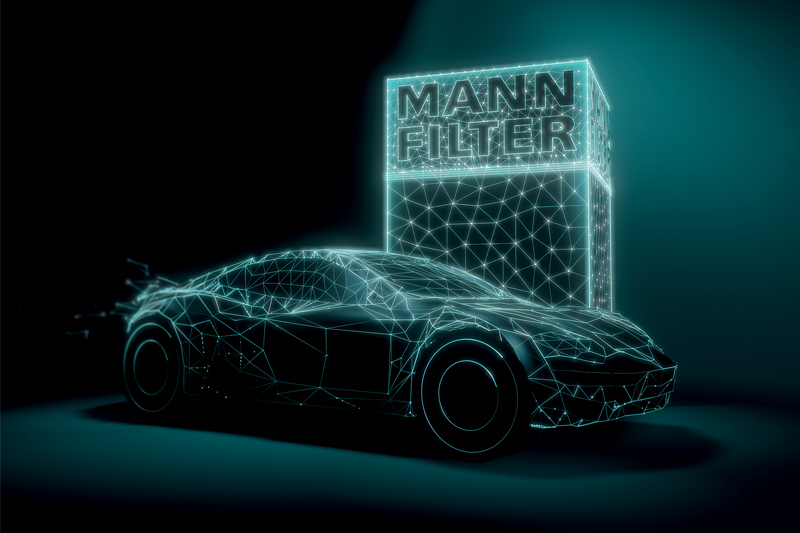
Mann+Hummel explores the role cabin air filters play in improving drivers and passengers’ health.
Millions of people around the world are suffering from the effects of polluted air, not only outdoors in spaces with a lot of traffic, but also inside vehicles. It is therefore becoming essential to improve air quality by reducing particulate matter and harmful gasses. With its latest innovation in cabin air filtration, global filtration expert Mann+Hummel is concentrating on a particle size that is becoming increasingly important – so-called ultra-fine particles (less than 0.1 micrometer). These can get particularly deep into the human body and cause harmful damage. The World Health Organization is also paying particular attention to ultra-fine particles and in its latest air quality guideline has called for this particle size to be included in routine measurements.
Regardless of the drive system, cabin air filters play a major role in providing drivers and occupants with clean and healthy air. In electric vehicles, there is also a trend toward improving air quality through multi-stage filter systems.
Are multi-stage HEPA filter systems the future?
Mann+Hummel has developed HEPA filter systems to effectively protect people from these microscopic impurities. The abbreviation HEPA stands for high wfficiency particulate air. It is not a protected term, so special care must be taken here. The addition of “in accordance with DIN EN 1822 and ISO 29463” indicates whether a filter actually meets the high requirements of European and international standards. “Our filter media meet these requirements,” explains Christiane Michel, business development manager at Mann+Hummel.
“Our multi-stage cabin air filter systems with highly efficient HEPA filters offer protection through clean room quality air filtration, as is also the case in operating rooms, for example. Depending on the HEPA class, at least 99.95 per cent of the particles are reliably removed from the air, including harmful bacteria, viruses and other microorganisms, even the previously mentioned ultra-fine particles. These are so small that they can easily penetrate into the bloodstream, cause severe damage to organs and be carcinogenic,” Michel adds. “We now know that more than 90 per cent of the particles in the air are ultra-fine particles. Whether they are safe or not depends on their source and chemical composition.”
Mann+Hummel uses the HEPA filter as part of a three-stage system along with a prefilter and a cabin air filter. Both can be equipped either as pure particle filters, in combination with activated carbon or as a third version with biofunctional and microbial coating. The particle filter uses a special nonwoven material that efficiently retains dust, soot and pollen, while the activated carbon filter adsorbs harmful gasses and odours. A biofunctional coating binds allergens that can be released from pollen and provides additional protection against the growth of mould and bacteria on the filter medium.

HEPA filter properties
Michel describes the situation: “Since a HEPA filter can capture much finer particles than a conventional cabin air filter, its fibre structure is significantly denser, which results in significantly lower air permeability. To compensate for this, a HEPA filter has more media surface area and thus achieves the lowest possible pressure drop. In fact, the surface area of the filter media in our HEPA filters is about five times larger than in a conventional element, thanks to a smaller pleat spacing. It is therefore currently not possible to replace a standard cabin air filter with a HEPA element. Air conditioning systems are not built for these high efficiency filters. Instead, the HEPA filter is located in a separate system – usually outside the air conditioning system – together with a prefilter, as protection for the HEPA filter.”
Smart multi-stage
HEPA filter systems are also designed to ensure that filtration only takes place when it is needed. An intelligent control system records the air quality and provides data on the basis of which the system decides which of the three filters the air should flow through. “This ensures that the HEPA filter is activated automatically as the final filtration stage only when required, for example, when the outside air is heavily contaminated. This allows the size of the system to be kept small and extends the life of the HEPA filter,” according to Michel.
Reducing particulate matter Another future filtration solution from Mann+Hummel for the independent aftermarket is the reduction of particulate matter generated in road traffic. These particulate emissions include not only exhaust gasses, but also particles that enter the air as a result of braking and the wear of tires and road surfaces. The problem of particulate matter is therefore independent of the drive system and also applies to electric vehicles. To prevent this particulate matter from entering the atmosphere in the first place, the experts at Mann+Hummel take care of these particles as soon as they are created. They have developed a wide range of solutions to improve the particulate matter balance of vehicles. In addition to a brake dust particle filter that reduces brake dust emissions directly at the source, there is also a filter for the roof or underside of vehicles that collects particulate matter from the ambient air.
Cabin air filters will remain an essential component of future vehicles – regardless of the drive system. Up to 540,000 litres of air per hour can flow into a vehicle via the ventilator. In this way, pollutants can enter the vehicle interior from the outside and remain there for a long time – increasing the air pollution in the vehicle interior. This is precisely where multi-stage cabin air filter systems with their advantages come into play, but also effective cabin air filters such as the Mann-Filter FreciousPlus with its biofunctional coating and effective protection against allergens, harmful gasses and particulate matter. In order for a cabin air filter to function properly, it is important to replace it regularly. The recommended replacement interval is 12,000 miles or once a year.
“Our goal for the future is to offer further cutting-edge technologies inside the vehicle, such as digitally displaying the filter status and air quality in real time,” concludes Michel.


